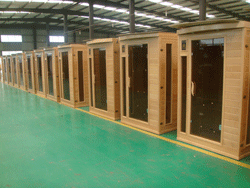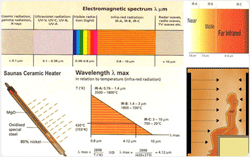Our Dedicated Factory
Our dedicated factory has been manufacturing the famous Aspen brand infrared saunas for over 12 years now and our capacity in that time has quadrupled. We are now one of the leading infrared sauna designer and manufacturers around, and we supply companies in Holland, Germany, Czech Republic, Norway, U.S.A and New Zealand.
Because of this we have recently doubled our manufacturing capacity in our new dedicated site. We have also invested in the latest state of the art machinery ensuring consistency and quality throughout our range of infrared saunas. What this means is that when you buy an Aspen infrared sauna, you can be sure that you will receive an infrared sauna that is manufactured to the most stringent modern specification.
This is because every sauna we make is manufactured by a team of highly trained craftsmen and throughout the process there are stringent quality control checks. This is also true for the electronic components, the quality and uniformity of the Canadian hemlock wood and all other hardware. Before any sauna leaves our dedicated factory it undergoes a full mechanical and electrical testing session, so it matches the high standard that UK Saunas are known for.
Why Do We Use Hemlock?
The Canadian Hemlock is a slow-growing tree, with a conical growing pattern and soft, fine needles. The needles are a dark green on top and light green on their bottoms. Once the tree reaches maturity, the bark is most often a rust or cinnamon red. A very long life span allows The Canadian Hemlock to reach a height of up to 80 feet. The tree requires moist but well-drained soil, and because of its shallow root system it must be protected from high winds.
The most common filament material used for electrical infrared heaters is tungsten wire, which is coiled to provide more surface area. Low temperature alternatives for tungsten are carbon, or alloys of iron, chromium and aluminum (trademark and brand name ‘Kanthal’). While carbon filaments are more fickle to produce, they heat up much more quickly than a comparable medium-wave heater based on a FeCrAl filament.
Far Infrared
This heating technology is used in some expensive infrared saunas. It is also found in space heaters. These heaters use low watt density ceramic emitters (usually fairly big panels) which emit long wave infrared radiation. Because the heating elements are at a relatively low temperature, far-infrared heaters do not give emissions and smell from dust, dirt, formaldehyde, toxic fumes from paint-coating, etc. This has made this type of space heating very popular among people with severe allergies and multiple chemical sensitivity in Europe. Because far infrared technology does not heat the air of the room directly, it is important to maximize the exposure of available surfaces which then re-emit the warmth to provide an even all round ambient warmth.
Electrically-heated infrared heaters radiate up to 86% of their input as radiant energy. Nearly all the electrical energy input is converted into infrared radiant heat in the filament and directed onto the product by reflectors. Some energy is lost due to conduction or convection.For practical applications, the efficiency of the infrared heater depends on matching the emitted wavelength and the absorption spectrum of the material to be heated. For example, the absorption spectrum for water has its peak at around 3000 nm. This means that emission from medium-wave or carbon infrared heaters is much better absorbed by water and water-based coatings than NIR or short-wave infrared radiation. The same is true for many plastics like PVC or polyethylene. Their peak absorption is around 3500 nm. On the other hand, some metals absorb only in the short-wave range and show a strong reflectivity in the medium and far infrared. This makes a careful selection of the right infrared heater type important for energy efficiency in the heating process.
Ceramic elements operate in the temperature of 300°C to 700°C (572°F - 1292°F) producing infrared wavelengths in the 2000 to 10000 nm range. Most plastics and many other materials absorb infrared best in this range, which makes the ceramic heater most suited for this task
Carbon heaters are relatively recent and produce high quality, long wave far infrared heat, but the problem is they do not produce a big amount of it. They need to be accurately specified for the spaces to be heated.





